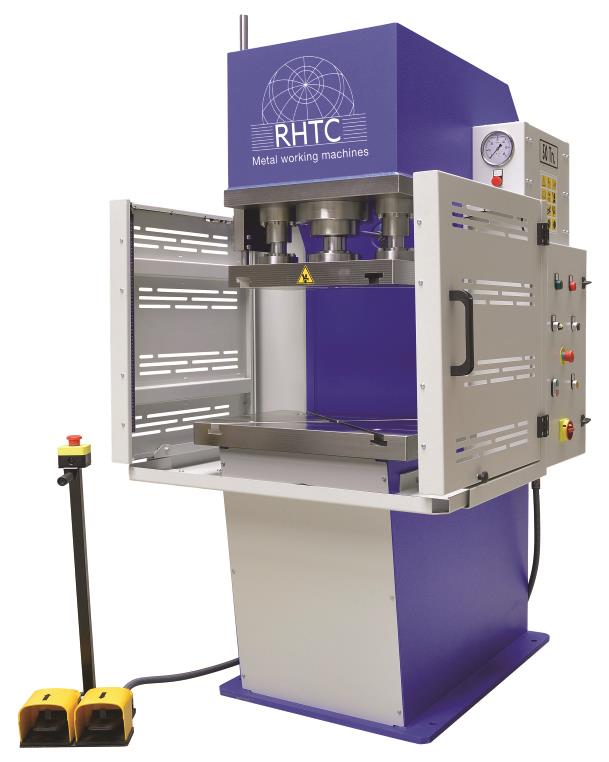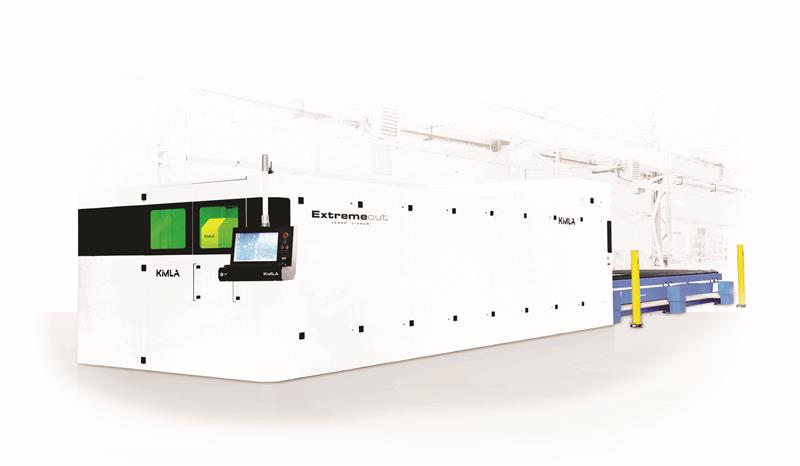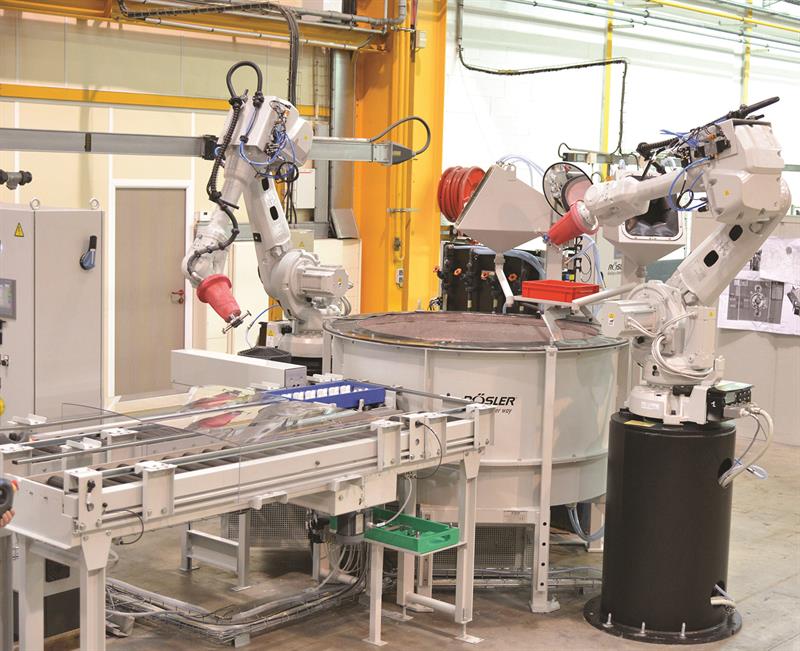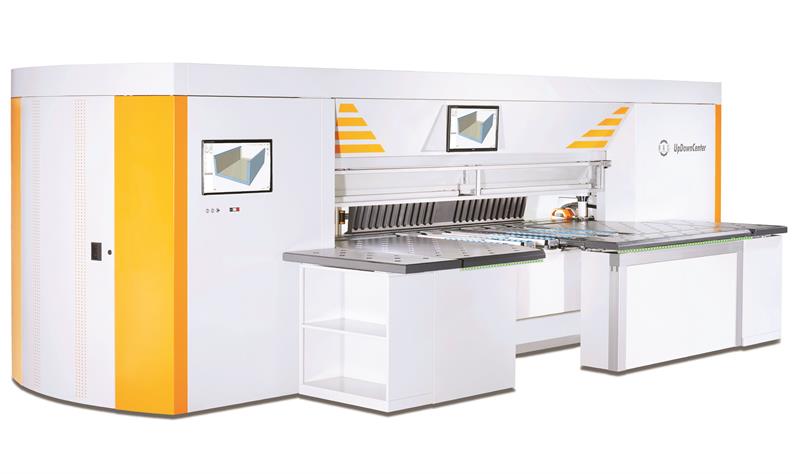Contents and links:
Perhaps because sheet metal processing systems are just one step in a much larger factory production process, the connections between machines and industrial networks seems to be a popular theme in pre-show press material. New machines coming to market are becoming more connectable, and more intelligent, holding out the promise of greater production efficiency.
These developments refer specifically to Industry 4.0. Bystronic head of development Dr Jürgen Hohnhaus explains its relevance to this industry: “The goal of Industry 4.0 is the digital penetration of industrial business fields in order to improve the efficiency of production processes. In our case, we are talking about sheet metal processing. People, machines and manufactured parts that are involved in this process all become interlinked. An additional factor, apart from this interconnection, is artificial intelligence. This allows intelligent networks to be created, within which machines will learn and optimise themselves in the future.”
This has come up because Bystronic (Hall 12, Stands A66, A76 and B66) is hinting that it is to release “something unique” that focuses on Industry 4.0. Although the company has avoided giving details in advance of the show, Hohnhaus did say this about the product: “We are not talking about isolated solutions: we will present to our customers an interlinked, intelligent overall solution for successful sheet metal processing.”
Meanwhile, sheet metal cutting rival Amada (Hall 12, Stands D06 and F06) will give an overview of its Industry 4.0 V-factory concept and present eight machines. As regards the former, it will show bending machines integrated with the wider factory through Amada’s Smart Factory digital management network. The company says that “intelligence, interaction and integration will be evident”. And there will be a new version of its VPSS 3i sheet metal engineering software, which can simulate all processing operations at once. In terms of profiling and punching, there’s a new ACIES-AJ laser-punch combination machine, now with fibre laser rather than CO2 laser source, a fibre laser-based flatbed machine, the LCG-3015 AJ equipped with an Amada-developed 6 or 9 kW fibre laser source (see also p41), and a 3 kW laser version of the Ensis AJ fibre laser cutting machine that promises to improve cutting speeds and quality. The Ensis AJ also features an eight-station nozzle changer and the new ‘WACS II’ cooling cut for thick mild steel processing.
At a larger scale of production, press manufacturer Schuler (Hall 27, Stand F82) will show its ‘Smart Press Shop’ vision, demonstrating how networking solutions in forming technology can increase not only process reliability, but also cost-effectiveness in production. In a modern servo press line from Schuler, around 30 industrial PCs are to be networked to ensure a high level of productivity and safe part transport from one press station to the next. The systems will provide data measured by sensors installed at numerous points, for example to monitor press force. If the press force progression deviates from a particular pattern, that trend indicates irregularities in the process. These solutions gather important information that can be used to maintain the line, thereby preventing damage to the machine and tool. If it becomes apparent that not everything is running smoothly, a service engineer can connect to the customer’s system online to resolve the issue remotely. Also, forming simulation provides valuable information for investigating ways to optimise the system virtually, without disrupting actual production. Many of these examples are already common practice on Schuler equipment, the company offers.
Siemens (Hall 27, Stand F21) continues the theme of integration by presenting an optimised concept of an integrated press shop that is said to offer more freedom of movement and more flexible segments. Its show stand will display the integration of the vertical segment – represented by a servo press – and the horizontal segment – represented by a handling system. It is also to show off its press line simulation systems, and equipment for safety systems and pumps.
In another development, Siemens has worked with AP&T (Hall 27, Stand H52) and Swedish software house Summ Systems to generate simulations of how a planned AP&T production line will function and perform in an authentic environment. Based on Siemens’ Process Simulate software, AP&T’s technical sales team can visualise the production process and specify cycle times and production capacity with almost 100% precision (see www.machinery.co.uk/142981). The system will be shown alongside a new generation of AP&T’s Multi Layer Furnace for press hardened vehicle parts.
Continuing the theme of large-scale sheet metal production, Fagor’s stamping systems business (Hall 27, Stand G104) will highlight high speed tandem lines and wave lines, servo transfer presses, the FlexCell transfer system, a new generation of forging presses, hydraulic presses with parallelism control for processing composites, plus press hardening equipment for automotive use. In metal processing, new developments in galvanizing lines, skin passes, levelling systems and rolling equipment will be introduced, as well as a new retrofitting service.
Mate (Hall 12, Stand D158) is likely to show its new quick-change turret punching system for punch presses, Ultra QCT. The product features a simple, intuitive tool-less punch retention mechanism that requires only a flip of the latch to remove and snap the new insert into place. The punch is keyed at the perimeter of the tool – not the centre – providing superior angularity control. The punch insert is made from MPM4 tool steel, and the punch driver features a SuperMax coating. The design integrates into all existing Mate UltraTEC, Ultra XT and Ultra Fully Guided guides and standard canisters.
Bihler (Hall 27, Stand E104) will present a Lean Tool Concept (LTC) for its RM-NC and GRM-NC stamping and forming machines that it claims will reduce costs by 50%, compared to that of forming tools on mechanical equipment. With LTC, many tool parts are designed to be common across multiple tools, so their manufacture can be standardised. Tools are designed in proprietary bNX Software.

RHTC C-frame press
RHTC (Hall 12, Stand B131) has grown from its origins in 2003 into a real specialist in hydraulic presses. In addition to its Holland-fabricated hydraulic workshop presses (known as ‘Profi Presses’, of which the 100 tonne capacity best-seller will be shown), it also makes other models. During the exhibition, visitors will be able to see, for example, a 300 ton cambering press that can be used to straighten and bend large profiles, bars and beams. This machine is equipped with optional side benches with guide rollers to facilitate its operation. A hydraulic C-frame press designed for stamping/forming, with upper and lower tables made out of CK-42 stainless steel, will be exhibited.
LVD (Hall 12, Stand F104) offers a range of sheet metal processing technologies and innovations. The Strippit PX-1530 punch press, now enhanced with the new Touch-P graphical icon-driven touch control, can punch, form, bend and tap to efficiently complete multiple processes, including complex three-dimensional parts. The machine will be shown with an automation system (FA-P) for load/unload and part picking – said to be LVD’s most advanced automation system yet.
Next from the company is bending. New adaptive bending technology, specifically designed for multiple bend profiles of XXL parts, will be unveiled at the show. The ToolCell 135/30 automated tool changing pressbrake maximises bending productivity through integrated tool storage, housed within the machine. Also, a range of Dyna-Press high speed electric pressbrakes – including a new 40 ton machine – will be demonstrated. The Cadman [software] suite is LVD’s answer to full process integration and optimised process flow; a new module, Smart Drawing Importer, allows CAD file import and efficient calculation of cost drivers.
Finally, LVD’s new Phoenix FL 3015 fibre laser cutting system features a 6 kW laser source, automated 10-station nozzle changer and Compact Tower (CT-L) material storage and retrieval system in a six-pallet configuration. It is set to be hailed as a cost-effective all-rounder, LVD says.

Kimla fibre laser profilers are new to the UK, available from MBA Engineering
Kimla (Hall 14, Stand K6; MBA Engineering), the Poland-based profiling machine manufacturer, is showcasing what it claims are the fastest operating and acceleration speeds on the market: the Kimla fibre laser 8 kW Extremecut 3 by 1.5 m, featuring IPG Photonics laser source and diode and Precitec Pro cutting heads. The machine to be shown is equipped with a three-pallet system plus tube system. Although new to the UK market, Kimla has more than 16 years’ experience in the design and production of advanced laser and waterjet cutting machinery. UK dealer MBA Engineering was established in 2009 to offer support to Bystronic laser users.
Hypertherm (Hall 13, Stand E108) promises a demonstration of a “completely new light industrial cutting system”: the Powermax line of plasma cutters, but details are thin on the ground. In addition, it is introducing new technologies in its HyPerformance line of automated plasma cutting systems to further improve cut quality on mild steel and non-ferrous materials, as well as to reduce operating costs. Also to be featured on the stand are HyPrecision waterjet cutting products, CAM nesting software, automation products, as well as torch and consumable technologies from Hypertherm and its Centricut and AccuStream brands.
Kjellberg (Hall 13, Stand B98; Messer Cutting Systems) is to demonstrate its latest plasma cutting units, with exhibits from the HiFocus neo and Smart Focus series. They will run alongside the Contour Cut technology that cuts with air as the plasma gas. Finally, the fibre laser XFocus is said to offer optimum cutting and marking parameters for cutting ranges for sheet thicknesses from 0.3 up to 20 mm in total.
Kempter (Hall 12, Stand B06) is set to present its PlasmaFil Compact system, a standalone extraction system for combustion and plasma cutting applications that is suitable for medium to large amounts of dust. Hazardous substances are cleaned automatically. \The built-in plate filter technology’s special design prevents individual filter elements from sticking. PlasmaFil Compact is available in six different versions, with extraction performance from 2,500 m³/h up to 11,000 m³/h. An optional SparkTrap system is recommended for installation upstream to remove spark and coarse particles before the filtering process. DustEvac, the optional dust disposal system, completes the hazardous material cycle. Using vacuum conveying, it transports the fine dust into BigBags after self-cleaning of the filter medium.

A new mass finishing system from German surface finishing expert Rösler (Hall 12, Stand F86; 0151 482 0444) uses one or multiple 6-axis articulated-arm robot(s) for handling workpieces. Equipped with a custom-designed gripper, the robot picks up components from the staging area and then dips them into a rotating processing bowl filled with grinding media that will initially be offered as 8 mm cones.
www.machinery.co.uk/116322
RAS (Hall 11, Stand B154; Press and Shear) will highlight two new products. The UpDownCenter is a semi-automated panel bender, launching in a 4,060 mm capacity machine for 3 mm mild steel capacity and variable box heights at the show. RAS is also showing the XLTbend, with 4,060 by 2.5 mm or 3,200 by 3 mm steel forming capacity, a flexible up-down bender.
This article was first published in the September 2016 issue of Machinery magazine.











